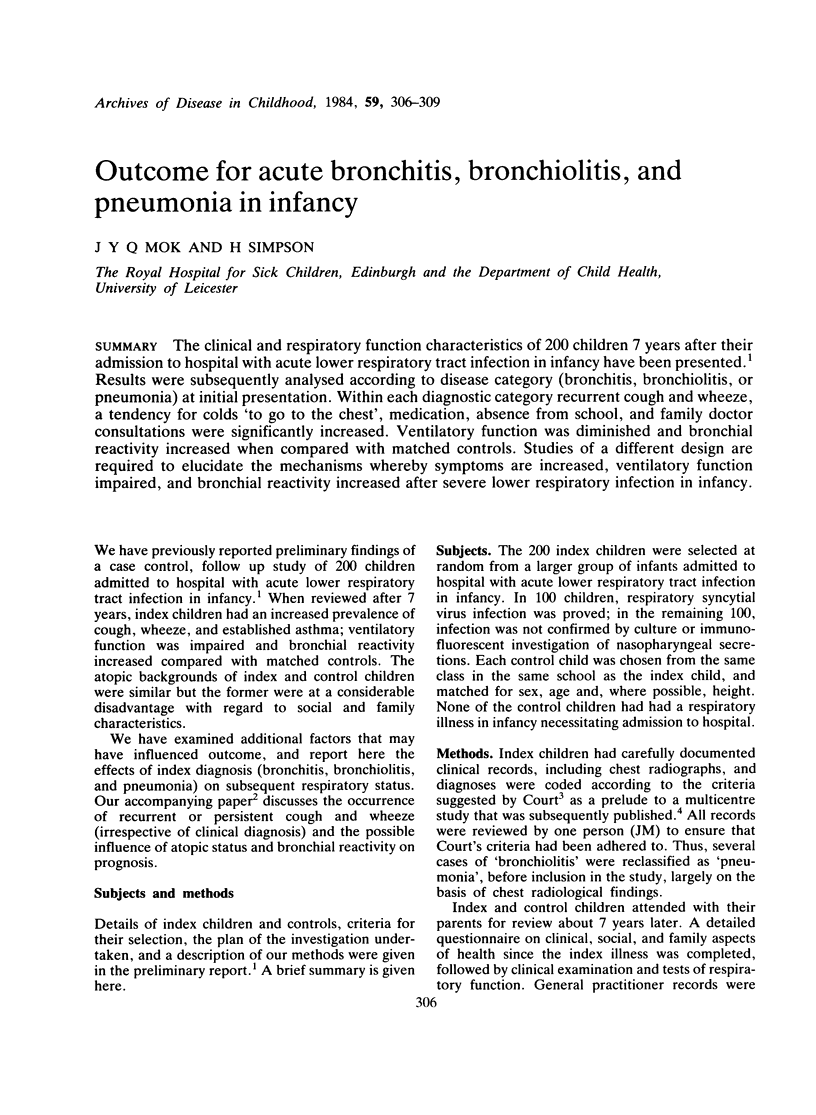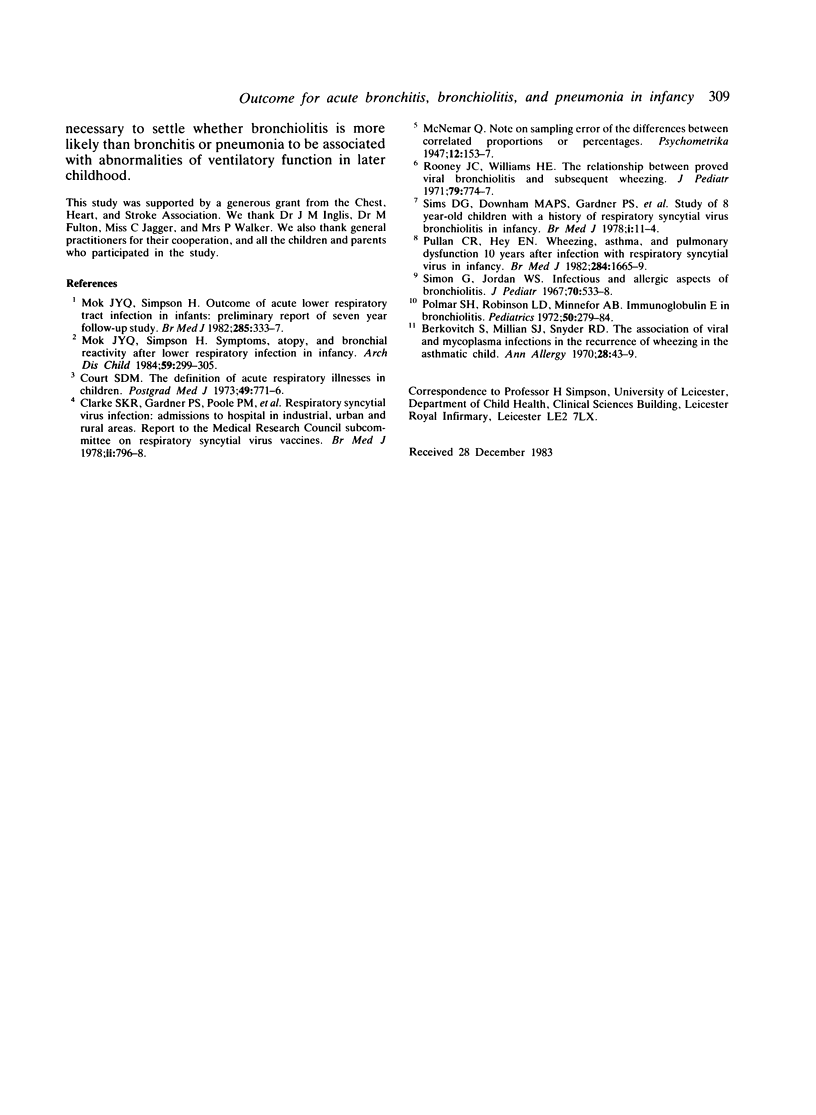Abstract
The clinical and respiratory function characteristics of 200 children 7 years after their admission to hospital with acute lower respiratory tract infection in infancy have been presented. Results were subsequently analysed according to disease category (bronchitis, bronchiolitis, or pneumonia) at initial presentation. Within each diagnostic category recurrent cough and wheeze, a tendency for colds 'to go to the chest', medication, absence from school, and family doctor consultations were significantly increased. Ventilatory function was diminished and bronchial reactivity increased when compared with matched controls. Studies of a different design are required to elucidate the mechanisms whereby symptoms are increased, ventilatory function impaired, and bronchial reactivity increased after severe lower respiratory infection in infancy.
Full text
PDF



Selected References
These references are in PubMed. This may not be the complete list of references from this article.
- Berkovich S., Millian S. J., Snyder R. D. The association of viral and mycoplasma infections with recurrence of wheezing in the asthmatic child. Ann Allergy. 1970 Feb;28(2):43–49. [PubMed] [Google Scholar]
- Court S. D. The definition of acute respiratory illnesses in children. Postgrad Med J. 1973 Nov;49(577):771–776. doi: 10.1136/pgmj.49.577.771. [DOI] [PMC free article] [PubMed] [Google Scholar]
- Mok J. Y., Simpson H. Outcome of acute lower respiratory tract infection in infants: preliminary report of seven-year follow-up study. Br Med J (Clin Res Ed) 1982 Jul 31;285(6338):333–337. doi: 10.1136/bmj.285.6338.333. [DOI] [PMC free article] [PubMed] [Google Scholar]
- Mok J. Y., Simpson H. Symptoms, atopy, and bronchial reactivity after lower respiratory infection in infancy. Arch Dis Child. 1984 Apr;59(4):299–305. doi: 10.1136/adc.59.4.299. [DOI] [PMC free article] [PubMed] [Google Scholar]
- Polmar S. H., Robinson L. D., Jr, Minnefor A. B. Immunoglobulin E in bronchiolitis. Pediatrics. 1972 Aug;50(2):279–284. [PubMed] [Google Scholar]
- Pullan C. R., Hey E. N. Wheezing, asthma, and pulmonary dysfunction 10 years after infection with respiratory syncytial virus in infancy. Br Med J (Clin Res Ed) 1982 Jun 5;284(6330):1665–1669. doi: 10.1136/bmj.284.6330.1665. [DOI] [PMC free article] [PubMed] [Google Scholar]
- Respiratory syncytial virus infection: admissions to hospital in industrial, urban, and rural areas. Report to the Medical Research Council Subcommittee on Respiratory Syncytial Virus Vaccines. Br Med J. 1978 Sep 16;2(6140):796–798. doi: 10.1136/bmj.2.6140.796. [DOI] [PMC free article] [PubMed] [Google Scholar]
- Simon G., Jordan W. S., Jr Infectious and allergic aspects of bronchiolitis. J Pediatr. 1967 Apr;70(4):533–538. doi: 10.1016/s0022-3476(67)80036-2. [DOI] [PubMed] [Google Scholar]
- Sims D. G., Downham M. A., Gardner P. S., Webb J. K., Weightman D. Study of 8-year-old children with a history of respiratory syncytial virus bronchiolitis in infancy. Br Med J. 1978 Jan 7;1(6104):11–14. doi: 10.1136/bmj.1.6104.11. [DOI] [PMC free article] [PubMed] [Google Scholar]


